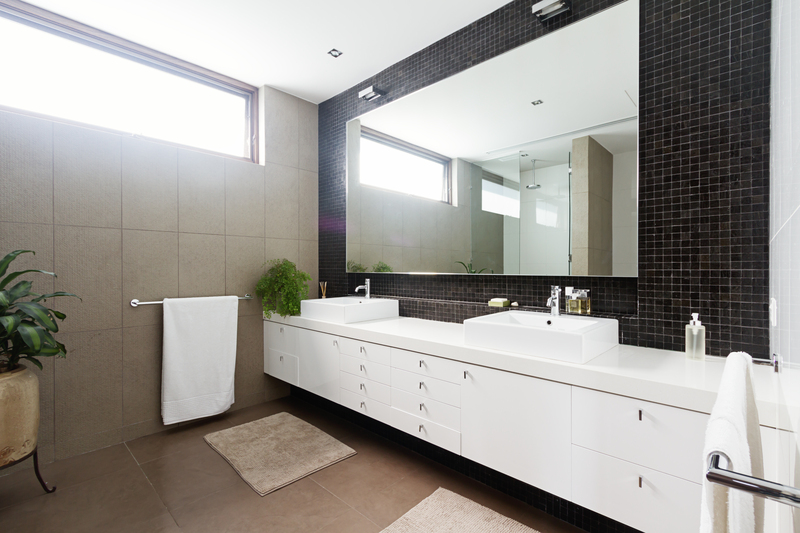Prioritizing Air Quality: A Critical Step for Businesses and Homes
Posted on 03/09/2025
Prioritizing Air Quality: A Critical Step for Businesses and Homes
Air quality is no longer just an environmental buzzword; it is a crucial factor that determines our health, productivity, and well-being. Whether we realize it or not, the air we breathe every day in our homes and workplaces affects every aspect of our lives. Prioritizing air quality has become an essential step for both businesses and residential settings. In this comprehensive article, we will explore why air quality matters, identify common pollutants, examine the impact on human health, and offer actionable steps for improving indoor air quality in both commercial and domestic environments.
Why Air Quality Should Be a Top Priority
The Overlooked Danger of Indoor Air Pollution
Most people associate pollution with crowded city streets, factories, or outdoor smog. However, research consistently shows that indoor air can be much more polluted than the air outside. The Environmental Protection Agency (EPA) states that indoor air quality (IAQ) can be two to five times worse than the air outside. This is particularly worrisome considering that the average person spends up to 90% of their time indoors, whether at home, in the office, or in other buildings.
Key Contributors to Poor Indoor Air Quality
- Building materials and furniture that off-gas volatile organic compounds (VOCs)
- Improperly maintained heating and air conditioning systems
- Chemical cleaning products and air fresheners
- Mold, mildew, and biological contaminants
- Particles from cooking, smoking, and burning candles
- Poor ventilation and sealed windows and doors

The Health and Productivity Impact of Indoor Air Quality
Consequences for Health
Exposure to polluted indoor air can cause immediate and long-term health problems. Short-term effects include headaches, dizziness, fatigue, allergies, and respiratory irritation. Long-term exposure can be even more serious, contributing to asthma, chronic respiratory diseases, heart disease, and even cancer.
- Asthma and Allergies: Dust mites, pet dander, and mold can trigger or worsen asthma attacks and allergic reactions.
- Respiratory Illnesses: Prolonged exposure to allergens and pollutants increases the risk of chronic bronchitis, sinus infections, and other respiratory illnesses.
- Heart Disease and Stroke: Fine particulate matter (PM2.5) can enter the bloodstream and increase the risk of cardiovascular conditions.
- Mental Health: Emerging research links poor indoor air quality to anxiety, depression, and reduced cognitive function.
Impact on Business Productivity
Businesses that make air quality a priority report direct benefits including:
- Increased employee productivity and concentration
- Reduced absenteeism and sick days
- Improved morale and job satisfaction
- Lower healthcare costs
- Enhanced company reputation for prioritizing employee well-being
Statistics show a 10% improvement in productivity when air quality issues are addressed in the workplace. Clearly, investing in clean indoor air is a smart business decision.
Common Air Pollutants in Homes and Businesses
1. Volatile Organic Compounds (VOCs)
These are gases emitted from products like paints, varnishes, cleaning products, adhesives, and new furniture. Prolonged exposure can cause headaches, nausea, and neurological disorders.
2. Particulate Matter (PM2.5 and PM10)
These tiny particles are produced by cooking, burning candles, smoking, and even from outside air infiltrating the building. They can penetrate deep into the lungs and enter the bloodstream.
3. Biological Pollutants
These include mold spores, bacteria, viruses, pet dander, and pollen. They often thrive in humid or damp areas and can exacerbate respiratory and allergic conditions.
4. Carbon Monoxide (CO)
This colorless, odorless gas is produced by incomplete combustion of fossil fuels. Even low levels can cause dizziness, headaches, and in severe cases, death.
5. Radon
A naturally occurring radioactive gas that can seep into homes and buildings through the foundation. Long-term exposure significantly increases the risk of lung cancer.
6. Ozone
While ozone is beneficial in the upper atmosphere, at ground level inside buildings, it can irritate the respiratory system and worsen asthma and other lung conditions.
Best Practices for Improving Indoor Air Quality
With growing awareness of the importance of prioritizing air quality, it is essential for both homeowners and business leaders to take active steps to ensure the air is safe and healthy. Below are effective strategies and solutions for creating a cleaner indoor environment.
1. Assess Your Indoor Air Quality
- Use air quality monitors to detect levels of CO2, VOCs, particulate matter, and humidity.
- Consider a professional IAQ assessment for detailed insights and recommendations.
2. Upgrade Ventilation Systems
- Ensure HVAC systems are properly maintained and filters replaced regularly.
- Install energy-recovery ventilators (ERVs) or heat-recovery ventilators (HRVs) to bring in fresh air while conserving energy.
3. Invest in Air Purifiers
- Choose HEPA filters for trapping fine particles and allergens.
- Consider air purifiers with activated carbon filters for removing odors and chemical pollutants.
- UV-C purifiers can be added for killing airborne bacteria, viruses, and mold spores.
4. Control Humidity Levels
- Use dehumidifiers in areas prone to dampness or mold.
- Keep indoor humidity between 30% and 50% to prevent biological contaminants.
5. Reduce Sources of Pollution
- Limit use of chemical-based cleaning agents. Opt for natural or eco-friendly products.
- Ensure proper storage and disposal of paints, solvents, and other chemicals.
- Avoid indoor smoking and minimize use of candles and incense.
6. Prioritize Green Building Practices
- Select low-VOC building materials, paints, and furnishings.
- Design for natural light and airflow whenever possible.
- Incorporate indoor plants that can help filter toxins and freshen the air.
7. Regular Cleaning and Maintenance
- Vacuum carpets and upholstery with HEPA-filtered vacuums.
- Clean air ducts, vents, and exhaust fans regularly.
- Address water leaks and condensation issues immediately to prevent mold growth.
8. Educate and Involve Occupants
- Teach employees or family members about the importance of good indoor air quality.
- Establish clear IAQ policies in workplaces, such as scent-free or smoke-free environments.
- Encourage feedback about air quality issues to identify problems early.
The Role of Smart Technology in Air Quality Management
Smart Sensors and Monitoring
The era of smart homes and smart offices brings new possibilities for monitoring and improving indoor air. Devices are available that continuously track humidity, particulate matter, CO2, VOCs, and temperature, sending alerts to your phone or building management system if air quality dips.
Automated Air Purification and Ventilation
Smart air purifiers can automatically adjust to changing pollution levels and work in tandem with ventilation systems. Some systems integrate with building management to optimize both comfort and energy efficiency.
Data-Driven Decision Making
By collecting ongoing air quality data, businesses can make informed decisions about when to schedule maintenance, increase cleaning, or adjust workflows to prioritize healthier air.
Legal and Regulatory Considerations
Increasingly, governments and regulatory bodies are introducing guidelines and rules to address indoor air quality in workplaces, public buildings, and rental properties. In many regions, employers are legally required to provide a safe, healthy work environment, which absolutely includes air quality. Failing to meet these requirements can result in fines, lawsuits, or reputational damage.
Relevant Standards and Guidelines
- ASHRAE Standards: The American Society of Heating, Refrigerating and Air-Conditioning Engineers sets worldwide best practices for IAQ in buildings.
- EPA Guidelines: The EPA offers resources for both homes and businesses on maintaining healthy indoor air.
- OSHA Regulations: The Occupational Safety and Health Administration enforces workplace air quality and exposure limits for certain contaminants.
- Local Building Codes: Many local governments have adopted specific ventilation and material requirements for new construction or renovations.
Staying compliant not only avoids legal troubles but also solidifies an organization's commitment to health.
Benefits of Prioritizing Air Quality in Homes and Businesses
The Payoff for Households
- Healthier living environment for children, elderly, and individuals with asthma or allergies
- Better sleep quality and daytime energy levels
- Reduced risk of expensive medical bills from chronic illnesses
- Higher property value and marketability
The Payoff for Businesses
- Enhanced productivity and employee satisfaction
- Fewer sick days and lower healthcare claims
- Improved company morale and reputation
- Compliance with current and future regulations
- Attracting and retaining top talent

Emerging Trends in Air Quality Improvement
Green Certification and Wellness Standards
Certification programs like WELL Building Standard, LEED, and Fitwel incentivize the use of materials and systems that promote healthy indoor environments. Businesses with these certifications signal a clear commitment to occupant well-being.
Biophilic and Nature-Inspired Design
Adding natural elements such as living walls, plants, and innovative ventilation solutions not only beautify spaces but also help filter toxins and regulate humidity.
Increased Investment in Technology
As people become more aware of airborne threats, demand is growing for advanced air purification, real-time monitoring, and hands-free building management technologies.
Conclusion: Making Air Quality a Forefront Issue
Prioritizing air quality is not just a trend--it is a necessity for any modern home or business. As we better understand the profound influence that air has on our health, cognition, and comfort, it makes sense to shift our focus toward creating environments where everyone can thrive. By assessing and improving indoor air conditions today, both residential and commercial property owners can protect their most valuable assets--their people and their futures.
Take action now: Evaluate your air quality, invest in effective solutions, and make clean air the standard for your home or business. Your health and success depend on it.





